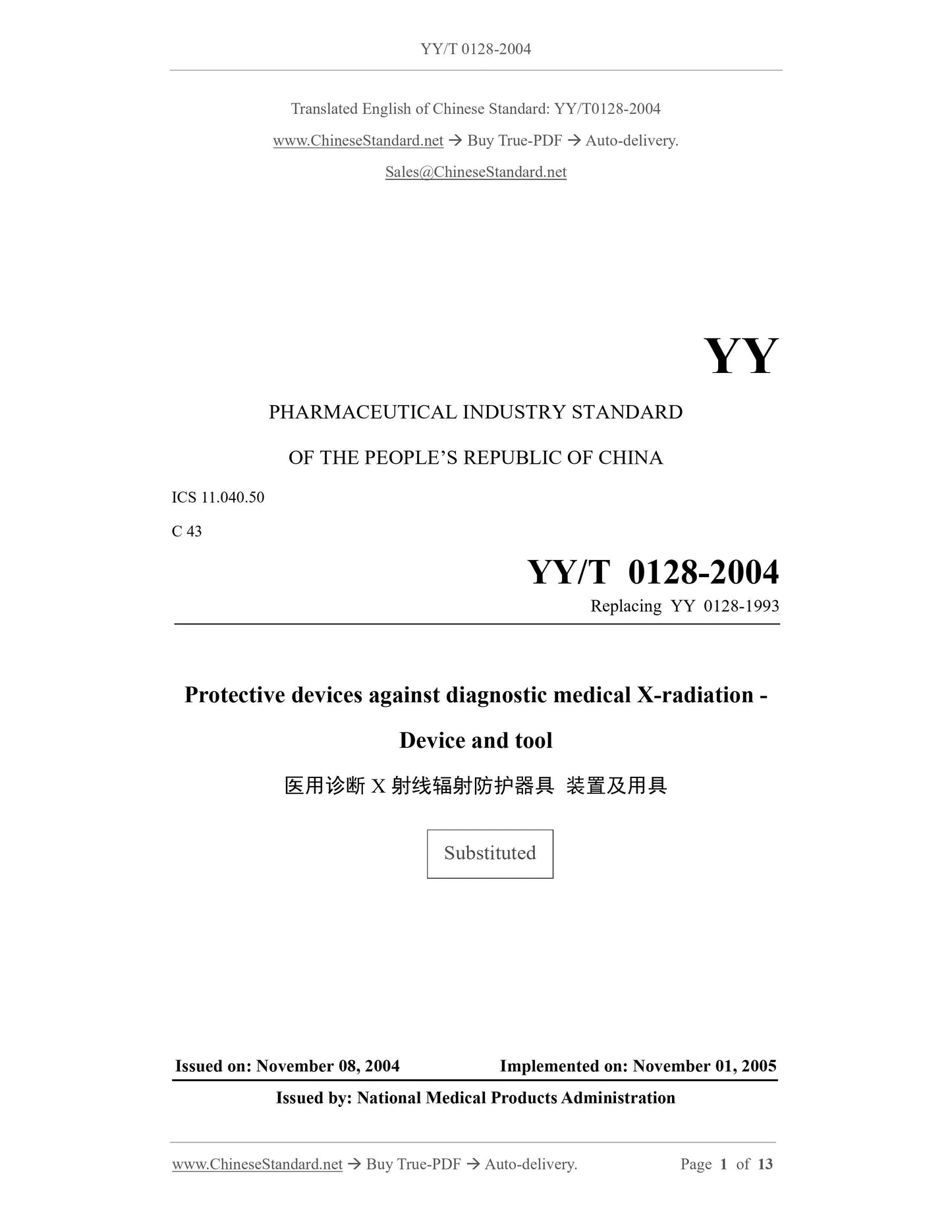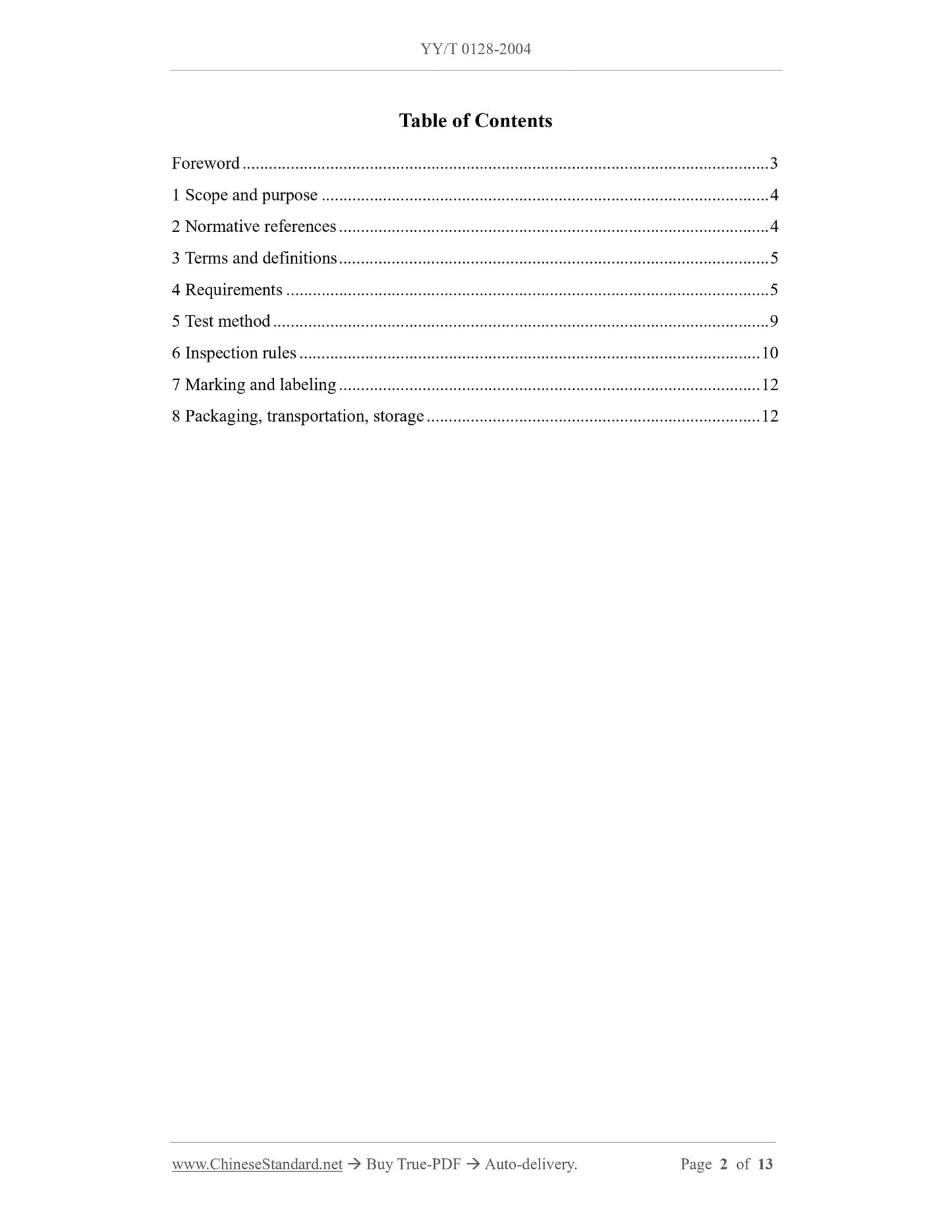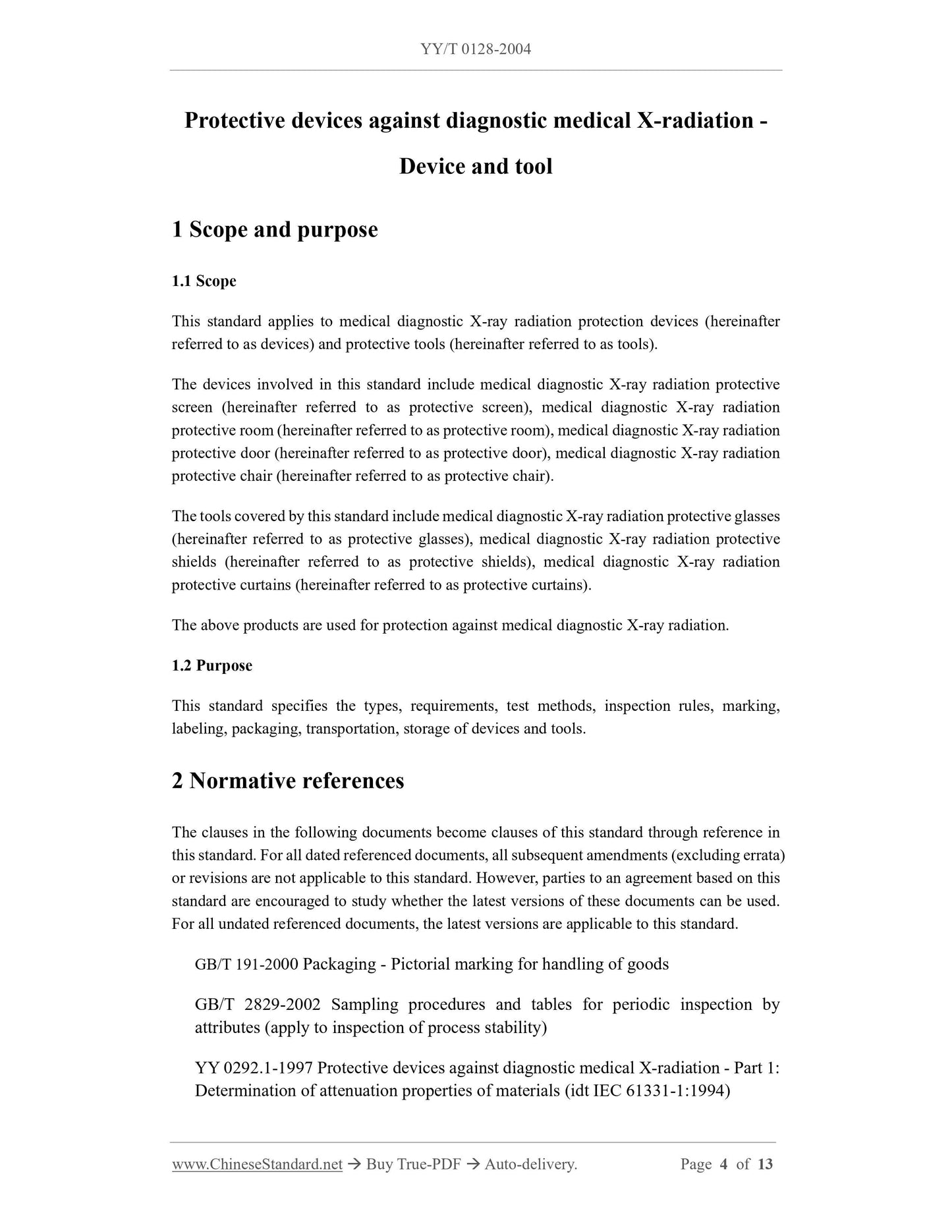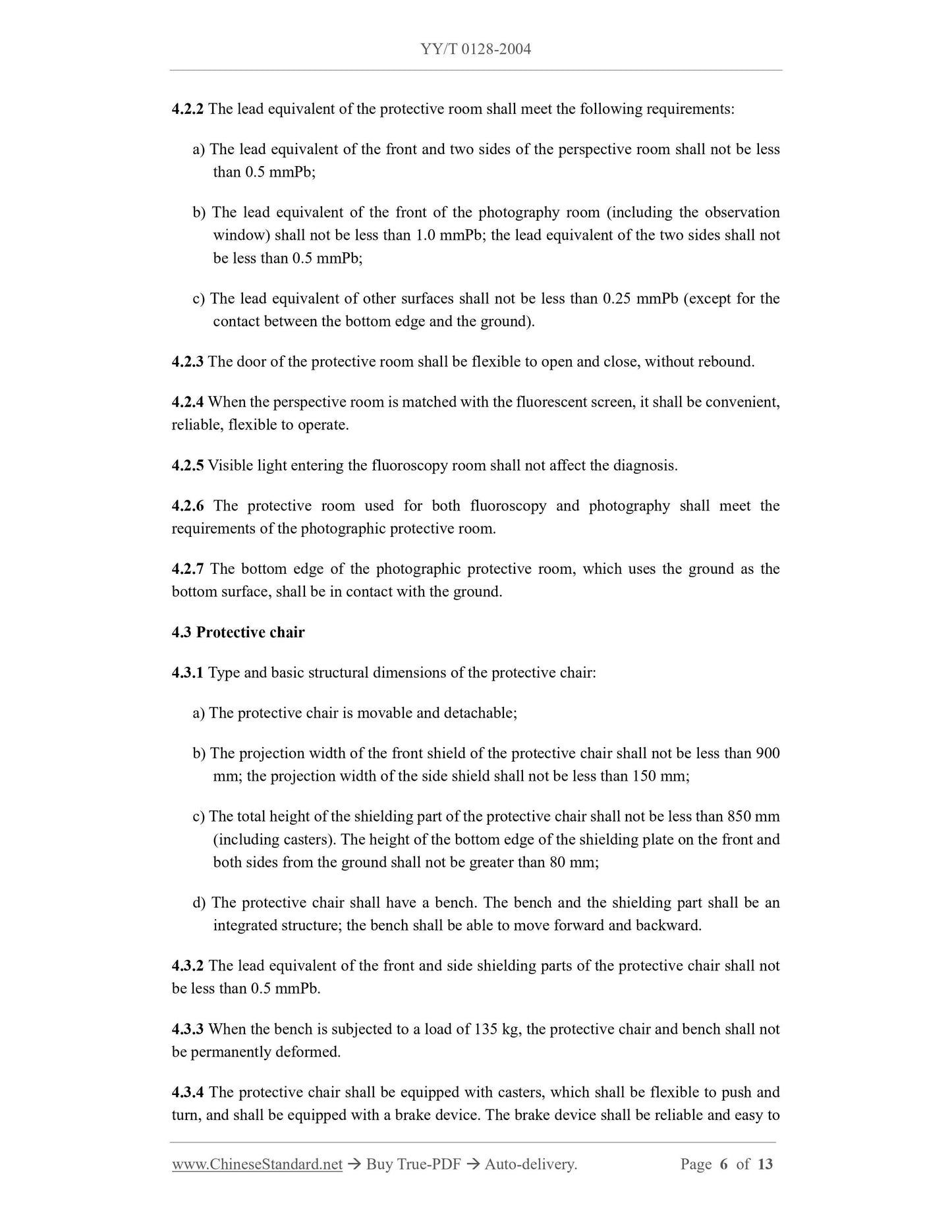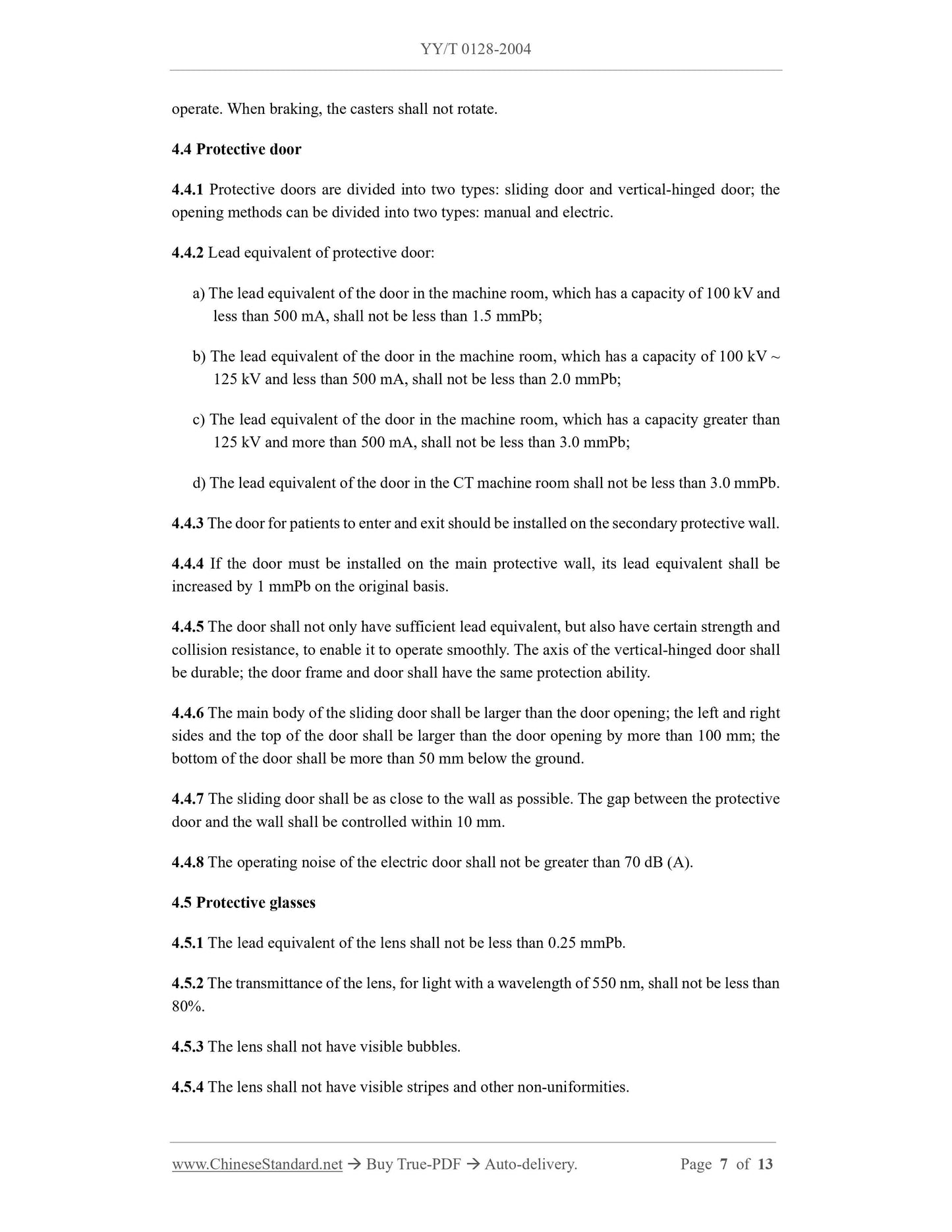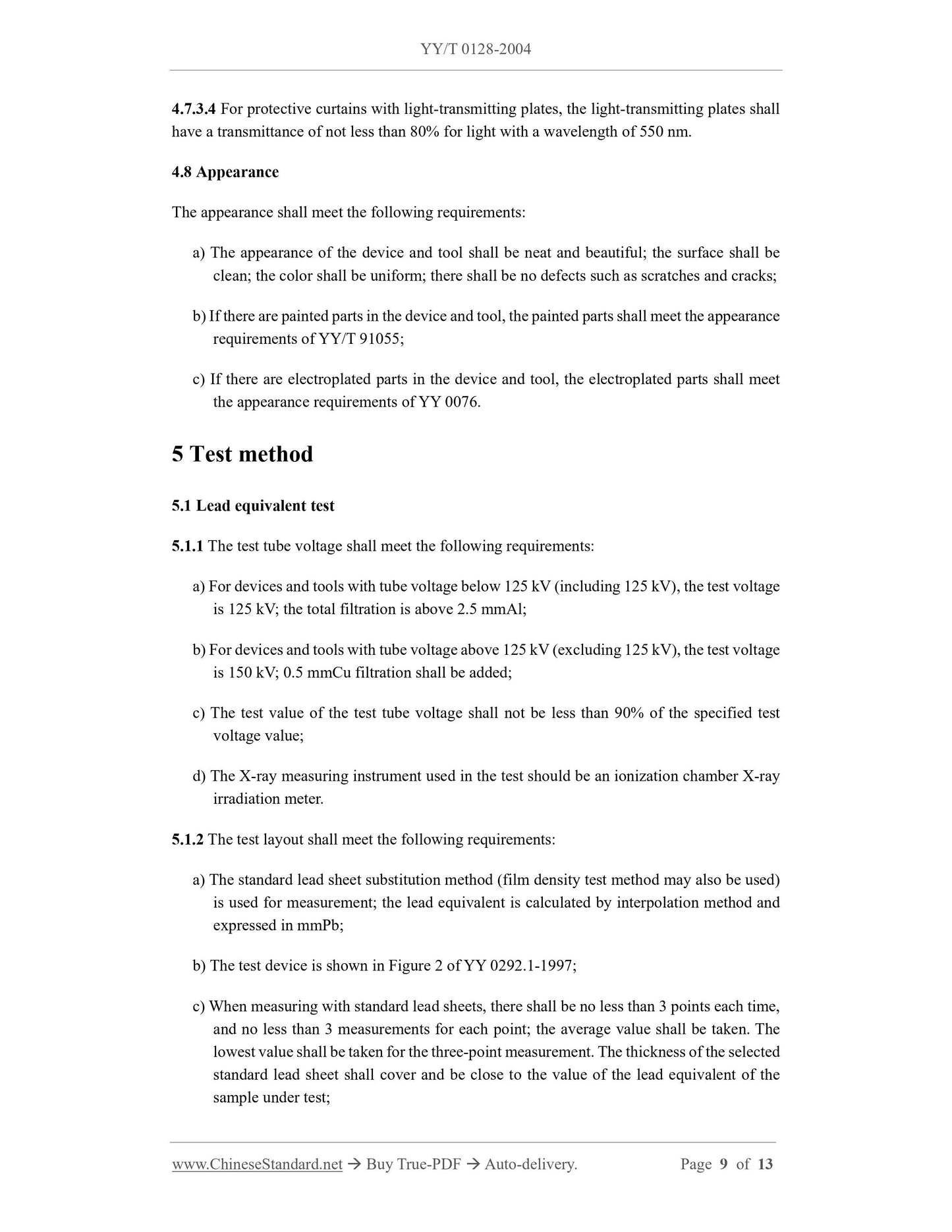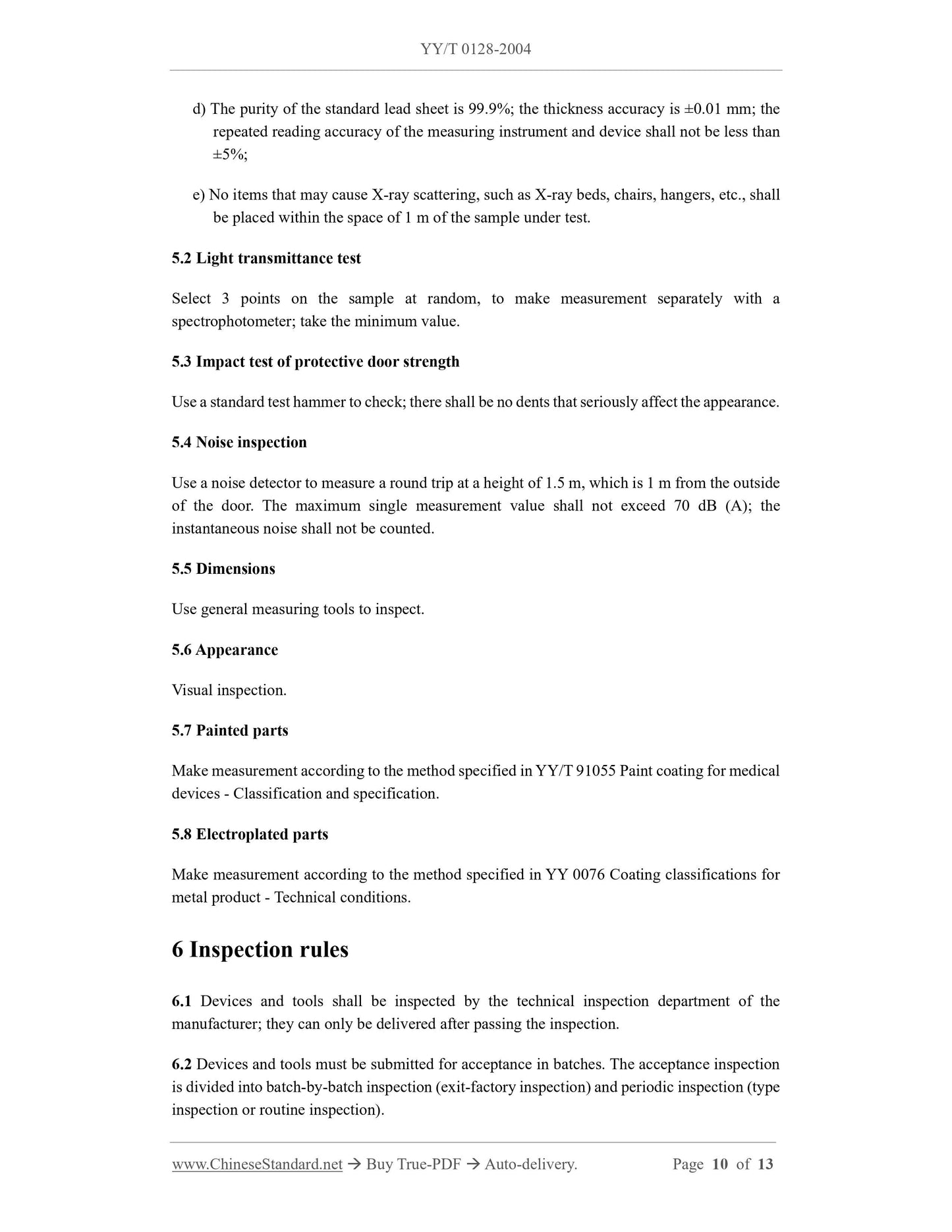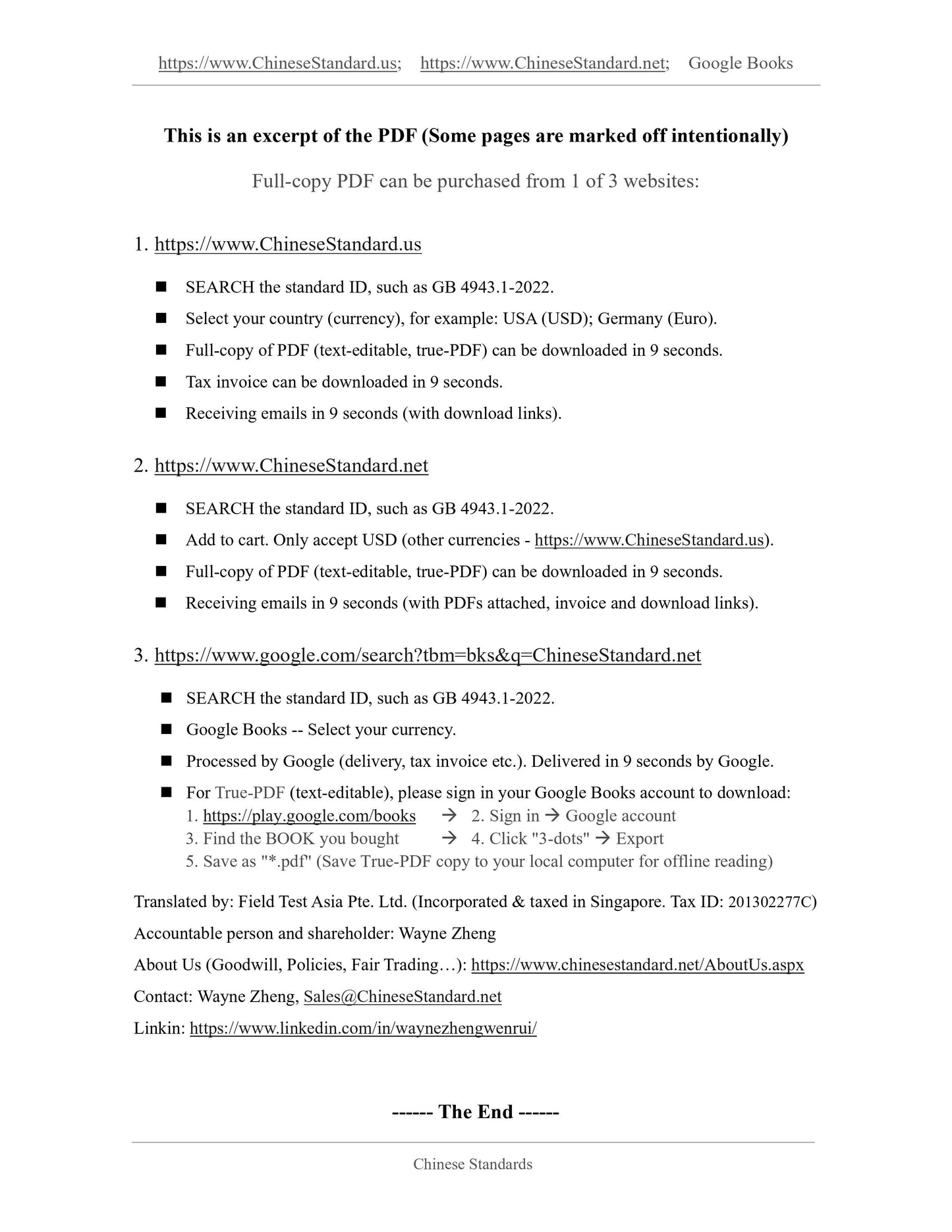1
/
of
8
PayPal, credit cards. Download editable-PDF and invoice in 1 second!
YY/T 0128-2004 English PDF (YY/T0128-2004)
YY/T 0128-2004 English PDF (YY/T0128-2004)
Regular price
$140.00
Regular price
Sale price
$140.00
Unit price
/
per
Shipping calculated at checkout.
Couldn't load pickup availability
YY/T 0128-2004: Protective devices against diagnostic medical X-radiation. Device and tool
Delivery: 9 seconds. Download (and Email) true-PDF + Invoice.Get Quotation: Click YY/T 0128-2004 (Self-service in 1-minute)
Newer / historical versions: YY/T 0128-2004
Preview True-PDF
Scope
1.1 ScopeThis standard applies to medical diagnostic X-ray radiation protection devices (hereinafter
referred to as devices) and protective tools (hereinafter referred to as tools).
The devices involved in this standard include medical diagnostic X-ray radiation protective
screen (hereinafter referred to as protective screen), medical diagnostic X-ray radiation
protective room (hereinafter referred to as protective room), medical diagnostic X-ray radiation
protective door (hereinafter referred to as protective door), medical diagnostic X-ray radiation
protective chair (hereinafter referred to as protective chair).
The tools covered by this standard include medical diagnostic X-ray radiation protective glasses
(hereinafter referred to as protective glasses), medical diagnostic X-ray radiation protective
shields (hereinafter referred to as protective shields), medical diagnostic X-ray radiation
protective curtains (hereinafter referred to as protective curtains).
The above products are used for protection against medical diagnostic X-ray radiation.
1.2 Purpose
This standard specifies the types, requirements, test methods, inspection rules, marking,
labeling, packaging, transportation, storage of devices and tools.
Basic Data
| Standard ID | YY/T 0128-2004 (YY/T0128-2004) |
| Description (Translated English) | Protective devices against diagnostic medical X-radiation. Device and tool |
| Sector / Industry | Medical Device and Pharmaceutical Industry Standard (Recommended) |
| Classification of Chinese Standard | C43 |
| Classification of International Standard | 11.040.50 |
| Word Count Estimation | 10,168 |
| Date of Issue | 2004-11-08 |
| Date of Implementation | 2005-11-01 |
| Older Standard (superseded by this standard) | YY 0128-1993 |
| Quoted Standard | GB/T 191-2000; GB/T 2829-2002; YY 0292.1-1997; YY 0292.2-1997; YY 0318-2000; YY 0076-1992; YY/T 91055-1999; IEC 60788-1984 |
| Regulation (derived from) | 2005 Bulletin No. 2 industry standard |
| Issuing agency(ies) | State Food and Drug Administration |
| Summary | This standard applies to diagnostic X-ray radiation protective device (hereinafter referred to as device) and protective equipment (hereinafter referred to as utensils). The apparatus covered by this standard include: medical diagnostic X-ray radiation shield (hereinafter referred to as shield), medical diagnostic X-ray radiation protection chamber (hereinafter referred to as protective chamber), medical diagnostic X-ray radiation protective door (hereinafter referred to as protective doors), medical Diagnostic X-Ray Radiation Protection Chairs (hereinafter referred to as protective chair). Equipment covered by this standard include: medical diagnostic X-ray radiation protective glasses (hereinafter referred to as protective glasses), medical diagnostic X-ray radiation protective shield West (hereinafter referred to as protective masks), medical diagnostic X-ray radiation protective curtain (hereinafter referred to as protective curtain). The products are used in medical diagnostic X-ray radiation protection. |
Share
